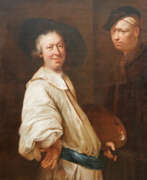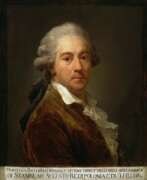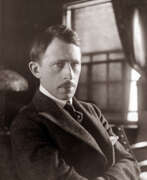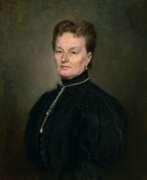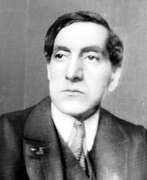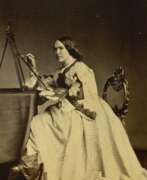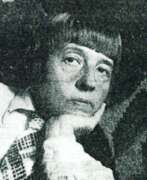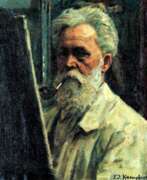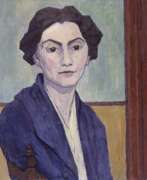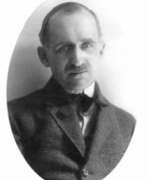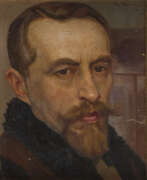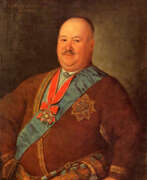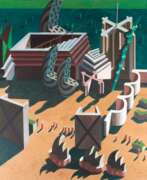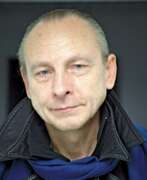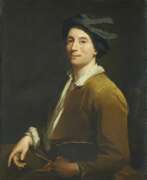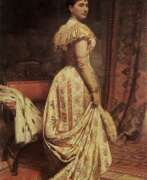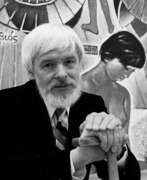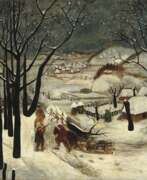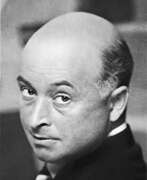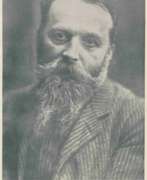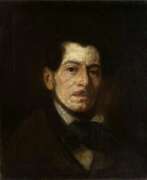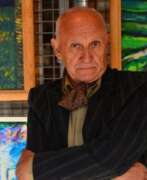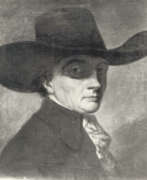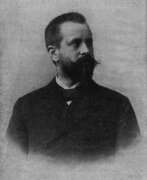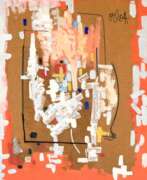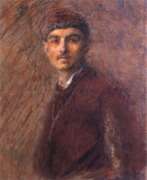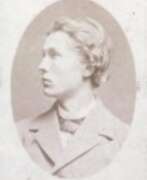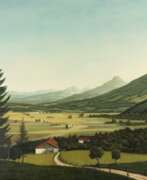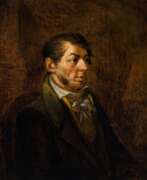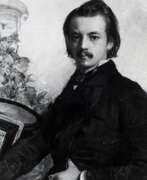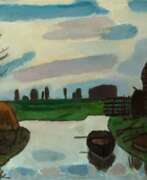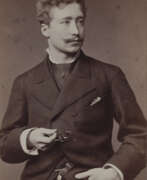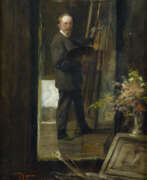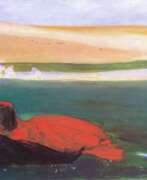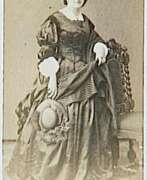Portraitist Poland
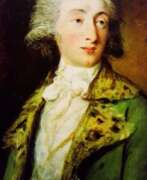

Carl Daniel David Friedrich Bach was a German artist of the late eighteenth and early nineteenth centuries, the Baroque period. He is known as a painter, graphic artist and printmaker.
Bach worked in the historical genre, was a portraitist, animalist, created canvases on allegorical subjects in the spirit of his era. In his works he combined elements of baroque and classicism. The artist often worked in the etching needle technique.


Abraham Adolf Behrman was a Polish artist of Jewish origin, best known for his paintings of Jewish shtetl life in the open air as well as landscapes and group portraits. He spent most of his life in Łódź and was killed during the liquidation of the Białystok ghetto during the Holocaust.
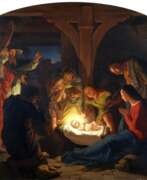

Albrecht Peter Bräuer was a German painter and draftsman, from 1860 a teacher at the School of Applied Arts in Breslau. Paintings for various places of worship, Bräuer soon made a name for himself as a church and history painter. In addition to this painting, he produced materials for art classes, such as templates for drawing classes, an ornamental work with 40 lithographs, which won a gold medal at a Berlin exhibition in 1878. He also copied works by old masters. He also engaged in experiments on dyes and art-theoretical research on perspective, anatomy and proportions. In addition, he collected engravings and drawings depicting garments, art objects from different times and cultures, as well as folders with ornamental, plant, perspective and anatomical studies for his studio at the art school.


Szymon Buchbinder was a Polish painter of the late nineteenth and early twentieth centuries of Jewish origin. He is known as a genre painter and portraitist.
Szymon Buchbinder created genre-historical paintings, often with moral overtones, as well as portraits executed in small formats. Many of the subjects were related to Jewish culture and customs. The style of Buchbinder's painting is considered by critics to be in the tradition of the old Dutch school of painting.


Fyodor Fyodorovich Buchholz (Russian: Фёдор Фёдорович Бухгольц) was a Russian artist of German origin in the late 19th century and the first half of the 20th century. He is known as a painter, graphic artist and teacher.
Fyodor Buchholz painted mainly on historical themes and genre paintings, as well as portraits and landscapes. At the end of the XIX century, the artist was fascinated by Art Nouveau. After the revolution of 1917 he began to create works on the themes of social construction.
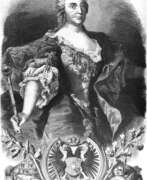

Georg Conrad Ludwig Burger was a German historical painter, illustrator, and medallist. He studied at the Berlin Art Academy, at the same time working at book illustrating; he was also a pupil of Thomas Couture in Paris. Among his best drawings are the illustrations for the works of La Fontaine and a collection of 20 plates known as Die Kanone. After 1869, he devoted himself to decorative painting, his most important work in this line being the walls and ceilings in the Berlin City Hall (1870) and the colossal figures symbolizing the warlike virtues at the School of Cadets at Lichterfelde (1878).
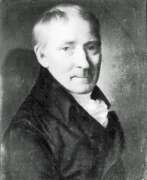

Daniel Caffé was a distinguished German pastel painter of portraits. Known for his meticulous craftsmanship and the emotive depth of his portraiture, Caffé initially embarked on a career in architectural decoration before his talents led him to Dresden to become a portrait artist.
Daniel Caffé's journey into the world of fine arts was marked by his study at the Dresden Academy of Fine Arts under the guidance of significant figures like Casanova and the influence of neoclassical artist Anton Raphael Mengs. His mastery of pastel made him a favored portraitist among the nobility and notable figures of his time, including Russian patrons like Prince Beloselski and Admiral Fyodor Grigoryevich Orloff.
His works, celebrated for their detailed and expressive nature, capture the essence of his subjects with striking realism and emotional depth. Among his notable works are portraits of prominent individuals such as Johann George Tromlitz and Karl August von Hardenberg, which not only exemplify his skill but also his contribution to the documentation of his era's influential figures.
Daniel Caffé's legacy as a pastel painter is preserved in various art collections and continues to be admired for its historical significance and artistic merit. He passed away on January 16, 1815, in Leipzig, leaving behind a body of work that continues to be studied and revered in the art community.
For collectors and experts in art and antiques, Daniel Caffé's portraits offer a glimpse into the refined pastel techniques and cultural narratives of the late 18th to early 19th century. His works remain a significant part of German art history, celebrated for their contribution to the development of portrait painting.
To explore more about Daniel Caffé’s life and works, consider signing up for updates on exhibitions and auctions where his art is featured. This will provide opportunities to engage more deeply with the legacy of this notable artist.
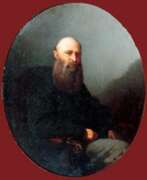

Romuald Chojnacki was a mid-nineteenth-century Russian artist of Polish descent. He is known as a painter and teacher.
Romuald Chojnacki was a follower of the Italian school of painting. He worked mainly in portrait and religious genres. At the beginning of his career, he also created historical paintings and returned to this genre shortly before his death.
The master was one of the founders of the Odessa Drawing School. Among his pupils was the famous Polish artist Stanisław Chlebowski.


Walter Firle was a German painter of the late nineteenth and first third of the twentieth centuries. He is known as a portrait and genre painter.
Firle was the author of a number of genre paintings and paintings on religious themes. Among his famous portraits are depictions of royalty, nobility, and famous personalities, including Prince Regent Luitpold of Bavaria, Ludwig III (King of Bavaria), and German Reich President Paul von Hindenburg. Several of his works were acquired by the National Gallery of Berlin. A portrait of Ludwig III was featured on a series of Bavarian stamps.
Firle was a professor at the Academy of Fine Arts in Munich and a member of the Munich Artists' Association.


Tadeusz Groeski (Russian: Фаддей Антонович Горецкий) was a mid-nineteenth-century Russian and Polish artist. He is known as a painter and teacher.
Tadeusz Groeski created a number of historical and genre paintings, as well as portraits of Russian intellectuals, soldiers, Polish church figures, family members and friends. He also made skilful copies of paintings by famous Italian and Spanish masters. His artistic legacy also includes drawings-illustrations for classics of Polish literature.
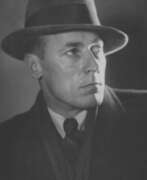

Jazep Mikhailovich Gorid (Russian: Язеп Михайлович Горид) was a Belarusian and Polish-Lithuanian artist of the first half of the twentieth century. He is known as a graphic artist and painter, caricaturist and illustrator.
Jazep Gorid drew political and everyday caricatures, painted portraits and landscapes. He also worked in book graphics, illustrated and designed books and other printed publications. In addition, the artist created stained-glass windows and murals.
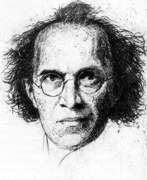

Heinrich Gottselig was a German painter of the first third of the twentieth century of Jewish origin who worked in Germany, France and Russia. He is known as a portrait and landscape painter, impressionist and modernist, and is considered one of the best representatives of the Frankfurt school of landscape and portrait painting.
Gottselig gained recognition at the age of 23 with debut works including portraits and landscapes. In 1913, he was recognized as one of the best representatives of his painting school. In addition to painting, the artist also practiced copper engraving.
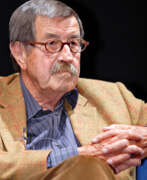

Günter Wilhelm Grass was a German novelist, poet, playwright, illustrator, graphic artist, sculptor, and recipient of the 1999 Nobel Prize in Literature.
Grass is best known for his first novel, The Tin Drum (1959), a key text in European magic realism. It was the first book of his Danzig Trilogy, the other two being Cat and Mouse and Dog Years. His works are frequently considered to have a left-wing political dimension, and Grass was an active supporter of the Social Democratic Party of Germany (SPD). The Tin Drum was adapted as a film of the same name, which won both the 1979 Palme d'Or and the Academy Award for Best Foreign Language Film. In 1999, the Swedish Academy awarded him the Nobel Prize in Literature, praising him as a writer "whose frolicsome black fables portray the forgotten face of history".
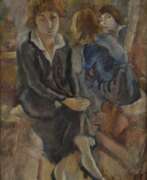

Moritz Heymann was a German painter, graphic artist and art teacher. Heymann initially worked primarily as a graphic artist and exhibited pencil drawings and lithographs. He created portrait and animal studies, especially of horses. Later he mainly showed paintings in exhibitions. From 1914 he often chose circus scenes as a motif for his works. He was a representative of Munich Impressionism.
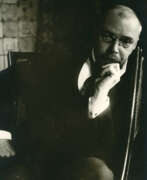

Paul Hoecker was a German painter of the Munich School and founding member of the Munich Secession. In 1874, he became a student at the Academy of Fine Arts Munich, which he attended until the spring of 1879. His most influential instructor was Wilhelm von Diez, who led him away from genre painting to a more impressionistic style. In 1891, at the young age of 36, he was appointed to the Munich Academy. He was one of the first "modern" teachers there, exposing his students to impressionism and the latest developments from the Barbizon School. In 1892 Hoecker became one of the founding members of the Munich Secession, acting as its secretary. The Secession ultimately inspired similar movements in Berlin and other cities.
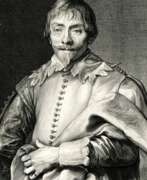



Leopold Stefan Horowitz was a Polish painter of the second half of the nineteenth and early twentieth centuries of Jewish origin. He is known as a portrait painter and genre painter.
Horowitz early in his career, in 1860, settled in Paris, where he became a well-known painter of genre paintings and portraits, especially of children. In his work he imitated the style of Rembrandt and later Van Dyck. In 1868, the artist moved to Warsaw, traveling frequently to Budapest, Vienna and Berlin to paint commissioned portraits of ladies from aristocratic circles. In Warsaw he produced paintings depicting life in the Jewish diaspora. In 1891 Horowitz settled in Berlin, where his brilliant technique and elegant style in the spirit of the old masters made him a popular portraitist among the local aristocracy.
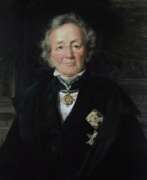

Adolph Jebens was a German painter of the mid-nineteenth century. He is known as a portrait painter and battle-painter.
Jebens moved to Russia in 1844 and became a teacher of painting at the Drawing School of the Imperial Society for the Encouragement of Arts. He created several portraits commissioned by His Imperial Majesty's Cabinet, including a portrait of Emperor Nicholas I. The artist was especially famous for his series of paintings devoted to the Russian army, of which 137 canvases are known. His works are represented in various museums, including the Hermitage, the Russian Museum, imperial palaces and many museums in Germany and Poland.
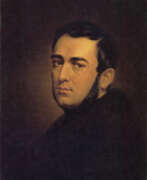

Jan Ksawery Kaniewski (Russian: Ян Ксаверий Каневский) was a Polish and Russian artist of the mid-19th century. He is known as a portrait painter.
Jan Kaniewski painted numerous portraits of members of the Russian imperial family (including Nicholas I) and the high society of the Kingdom of Poland. He also created a number of paintings on historical and religious themes.
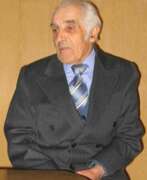

Konstantin Ivanovich Khoroshevich (Russian: Константин Иванович Хорошевич) was a Soviet and Belarusian artist of the second half of the twentieth and early twenty-first centuries. He is known as a painter who worked in the genres of landscape, portrait, still life.
Konstantin Khoroshevich during his career created more than 500 paintings, reflecting among other things significant events in the history of Belarus. In the last years of his life he worked on creating a gallery of portraits of cultural figures, his famous compatriots.


Carl Friedrich August von Kloeber was a German painter of the first half of the 19th century. He is known as a painter and teacher, a member of the Berlin Academy of Arts.
August Kloeber preferred to use motifs from mythology in his works, which distinguished him from many German artists of the time. He also created paintings on religious and historical subjects. He also painted portraits, and his models included members of Beethoven's family. Kloeber received commissions from the Prussian royal family and worked on the painting of castles, churches, and other sites. He also designed porcelain, jewelry, and medals.
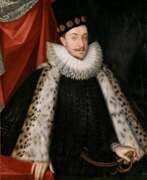

Martin Kober was a Polish painter of the second half of the 16th century of German origin. He is known as a court portrait painter, the founder of this genre in Poland.
Kober was a court painter who worked with various monarchs of Central Europe, including the Holy Roman Emperor, Polish kings and queens Stephen Bathory, Rudolf II, Anna Jagiellonka, and Sigismund III Vasa. Kober was the first artist in Poland to specialize in formal portraiture. His work had a significant influence on royal iconography and played an important role in the development of Polish portraiture. Kober was also an important representative of the early Baroque and his style found many imitators.
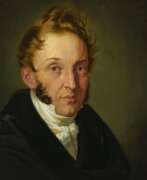

Aleksander Kokular was a Polish painter of the first half of the twentieth century. He is known as a painter and teacher, a representative of late classicism.
Aleksander Kokular was best known in the portrait genre. Models for his paintings were, in particular, the Russian Emperor Nicholas I, major Russian dignitaries, representatives of the Polish intelligentsia, the bourgeoisie and the clergy. The artist also painted pictures on historical, mythological and religious subjects.


Lotte Laserstein was a German-Swedish artist and a prominent representative of German realism.
Lotte was a student at the prestigious Berlin Academy of Fine Arts and became an accomplished realist painter, receiving a gold medal from the Academy for her work. Her first exhibition took place in 1930 at a Berlin gallery. Laserstein worked partly in figurative painting, had apprentices, and illustrated anatomy texts to earn money. She also painted portraits of cosmopolitan, emancipated women as well as self-portraits.
The National Socialist regime forced the artist to leave Germany in 1937 and emigrate to Sweden. Her mother died in a concentration camp. Lotte Laserstein lived in Stockholm until the end of her life, creating over five decades of work, in addition to expressive self-portraits, many moving images of other immigrants, rural landscapes and urban scenes in Sweden.
Lotte Laserstein became a member of the Swedish Academy of Fine Arts and earned a reputation as a popular and respected portraitist. She has approximately 10,000 works in her oeuvre.
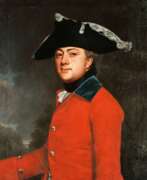

Georg Lisiewski was a German painter of the first half of the 18th century of Polish origin who lived in Royal Prussia. He is known as a painter and portraitist.
Lisiewski became famous for his single and group portraits, which were popular among the Prussian aristocracy and royal family. King Frederick William I appointed him as his court painter.
Lisiewski founded an influential dynasty of artists in Germany that lasted for more than three generations. His daughters Anna Rosina and Anna Dorothea, as well as his son Christoph Lisiewski, became famous artists.
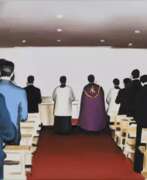

Marcin Maciejowski – is a contemporary Polish artist renowned for his humorous and candid observations of the everyday life. Painting from commercials, television series, newspapers, the internet, art history and his own experiences, Maciejowski is a keeper of our contemporary conditions.
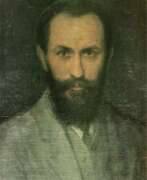

Anton Ivanovich Manastyrsky (Russian: Антон Иванович Манастырский) was a Ukrainian and Soviet artist of the twentieth century. He is known as a painter and graphic artist.
Anton Manastyrsky became famous for his genre paintings based on Ukrainian folk songs. His works are characterized by plasticity, rhythm and poetry. He also worked in the portrait genre, creating such canvases as "Portrait of Mother", "Portrait of Taras Shevchenko" and others. The master also illustrated books and worked in the religious genre, restoring the iconostasis in the Church of the Assumption of the Blessed Virgin Mary in Ancient Galich.


Vasily Vasilyevich Mate (Russian: Василий Васильевич Матэ), birth name Wilhelm Johann Mathé, was a prominent Russian artist and engraver, made a significant mark in the art world during the late 19th century. Unlike many of his contemporaries who focused on poetry and painting, Vasily Mate specialized in the art of engraving, establishing himself as one of Russia's leading engravers.
Vasily Mate honed his skills at the Imperial Academy of Arts, where he later became a full member. His expertise in engraving set him apart in an era where Russian art was predominantly influenced by poetry and painting. Mate's collaboration with eminent Russian painters allowed him to produce engravings that captured the essence of their paintings, thereby playing a crucial role in popularizing Russian art.
Vasily Mate's engravings encompassed a range of subjects, including portraits of notable figures like Alexander Pushkin and Nikolai Gogol. His ability to intricately transcribe these subjects onto metal plates garnered admiration and respect, securing his legacy in the annals of Russian art history.
For art collectors and enthusiasts, Vasily Mate's works offer a glimpse into the rich cultural heritage of Russia. His engravings are not just artistic creations but historical artifacts that provide insight into the artistic endeavors of the late 19th century.
If you are keen on exploring more about Vasily Vasilyevich Mate and staying updated on sales and auction events related to his works, we invite you to sign up for our updates. This subscription will serve as your gateway to the fascinating world of Vasily Mate's engravings, ensuring you don't miss out on any opportunity to own a piece of Russian art history.
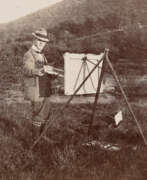

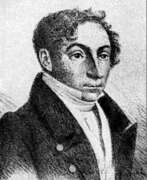

Józef Oleszkiewicz, a Polish-Lithuanian painter, was renowned for his contributions across Belarusian and Russian art scenes. Born in the late 18th century, Oleszkiewicz was celebrated for his masterful portraits and historical scenes, which were imbued with a distinctive blend of cultural influences that reflected his diverse heritage.
Oleszkiewicz's work is characterized by its meticulous detail and vibrant color palette, which set him apart from his contemporaries. His ability to capture the emotional depth and personality of his subjects made his portraits particularly revered. Among his notable works is the portrait of Adam Mickiewicz, a legendary figure in Polish literature, which is housed in the National Museum in Warsaw.
His career spanned various regions, leaving a significant mark on the art communities in Belarus and Russia as well. His influence is evident in the way he seamlessly integrated the artistic traditions of these cultures, making his works highly valuable not only for their aesthetic appeal but also for their cultural significance.
For collectors and experts in art and antiques, the work of Józef Oleszkiewicz offers a unique glimpse into the historical and cultural tapestry of Eastern Europe. His paintings are not just artistic expressions but are also historical documents that provide insight into the era's societal values and aesthetics.
To stay updated on exhibitions and auction events featuring works by Józef Oleszkiewicz, sign up for our newsletter. Ensure you never miss an opportunity to view or own a piece of this illustrious artist's legacy.
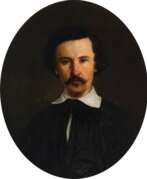

Edward Pawłowicz was a Polish-Lithuanian-Belarusian artist of the second half of the nineteenth and early twentieth centuries. He is known as a painter and graphic artist, public figure, memoirist and educator.
As an artist, Edward Pawłowicz painted portraits and landscapes in a style that critics define as transitional from classicism to romanticism. He also wrote several books of memoirs.
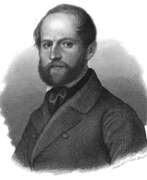

Robert Reinick was a German painter and poet who studied at the Berlin Academy of Arts and later at the Düsseldorf Academy under Friedrich Wilhelm von Schadow. He also travelled to Italy in 1838 and became a member of the Ponte Molle Society in Rome. Reinick settled in Dresden in 1844 and worked as a poet, translator and artist until his death in 1852. He was friends with many notable personalities, including Robert Schumann and Richard Wagner. Reinick's poem "Wie ist doch die Erde so schön, so schön!" was set to music by Johannes Brahms and gained great popularity through its use in the film Oedipussi by Loriot.


Ernst Resch was a German painter of the Biedermeier period. Resch studied at the Dresden Academy with Moritz Retzsch and came to Breslau in 1838. He is best known as a portrait and landscape painter. In 1860 he was appointed professor in Breslau and was an active member of the Silesian Society of Friends of the Arts. Works by Resch can be found in the National Museum in Warsaw, the Silesian Museum in Görlitz and the National Gallery in Berlin. Some of his works were in the estate of Adalbert Wölfl, who was one of his students, including portrait drawings, landscape sketches and draft compositions.
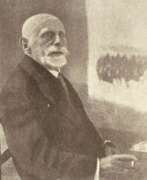

Jan Bogumil Rosen (Russian: Ян Богумил Розен) was a Polish painter born on October 16, 1854, in Warsaw, and passed away on November 8, 1936, in the same city. He specialized in battle scenes and was known for his meticulous attention to detail, especially in depicting horses and military uniforms.
Rosen began his artistic education under the guidance of Franciszek Kostrzewski and later studied at the Academy of Fine Arts in Munich. He also trained under renowned painters Jean-Léon Gérôme and Isidore Pils at the Académie des Beaux-Arts in Paris. Throughout his career, Rosen's work was exhibited widely and garnered significant attention, particularly in Munich and Warsaw. One of his notable works, "Contest of Carriages at the Ujazów Castle Square," exemplifies his skill in portraying dynamic scenes with great precision.
In addition to his battle scenes, Rosen also produced genre paintings and portraits. His work received recognition from various prestigious institutions, and he served as a court painter for Tsar Alexander III of Russia. Despite spending much of his career abroad, Rosen's work remained deeply connected to Polish themes and history.
For collectors and enthusiasts interested in Jan Bogumił Rosen's works, subscribing to updates about new product sales and auction events is highly recommended. Stay informed about opportunities to acquire pieces by this masterful artist.
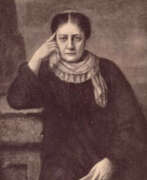

Hermann Schmiechen was a German painter of the late nineteenth and first quarter of the twentieth centuries. He is known as a painter, graphic artist, portraitist, representative of the Düsseldorf School of painting, and theosophist.
Hermann Schmiechen studied art in Breslau and Düsseldorf, and was a member of the art association "Malkasten". In 1883 he was invited to England to create portraits of the British aristocracy. In London, the artist became a member of the Theosophical Society. At the request of Helena Blavatsky, the head of the society, he drew several portraits of theosophical mahatmas. According to researchers, the master showed certain psychic abilities, which makes his work interesting and unique.
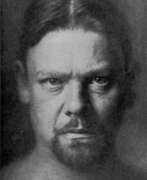

Rudolph Karl Alexander / Sascha Schneider was a German painter and sculptor. Schneider was born in Saint Petersburg in 1870. During his childhood, his family lived in Zürich, but following the death of his father, Schneider moved to Dresden, where in 1889 he became a student at the Dresden Academy of Fine Arts. In 1903, he met best-selling author Karl May, and subsequently became the cover illustrator of a number of May's books. A year later in 1904, Schneider was appointed professor at the Großherzoglich-Sächsische Kunstschule Weimar.
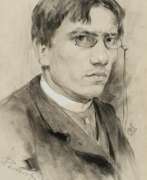

Paul Alfred Schroeter or Schröter was a German painter and etcher. He became a member of the Munich Secession and participated in their first exhibition of 1894. From 1898 to 1901, he lived in Hamburg where he became a co-founder of the Hamburgischer Künstlerklub. Many of his works are in private collections. Most of the others were destroyed during World War II.


Georg Eberhard Wolfgang Schuster-Woldan was a German painter and graphic artist, began his artistic education at the Stuttgart Academy of Fine Arts. After a brief interruption due to military service, he continued his studies in Munich and later in Frankfurt. He established a private art school in Munich and gained recognition for his large-scale paintings of legends and fairy tales. Schuster-Woldan later focused on portraiture, particularly of children and women. His works were highly regarded and exhibited prominently, notably at the Glaspalast in Munich.


Max Schwarzer was a German commercial artist and illustrator. In 1914, together with Friedrich Heubner, Valentin Zietara, Emil Preetorius, Franz Paul Glass and Carl Moos, he founded the artists' association The Six, one of the first groups of artists to market advertising commissions. Max Schwarzer drew for the satirical journal Simplicissimus. His carnival posters shaped the Munich carnival, such as In the Magic Garden of Regina (Carnival 1928) or Munich Carnival (1934). Max Schwarzer painted covers for the magazine Uhu in the New Objectivity style. In 1930 he made the Art Deco mosaics on the steamer Europa with Hans Gött. In the early 1920s, he illustrated the fairy tale volumes for the Munich Rösl publishing house with hand-colored pictures and ornaments.


Wincenty Sleńdziński (Russian: Викентий Александрович Слендзинский) was a Polish-Lithuanian and Russian painter of the second half of the 19th and early 20th centuries. He is known as a painter and pianist.
Wincenty Sleńdzinski created portraits, landscapes and genre paintings. A special place in his work was occupied by the religious genre, the artist painted churches in Moscow and Lithuania.
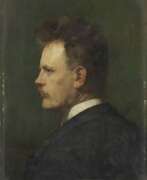

Walter Thor was a German painter and illustrator. He studied at the Academy of Fine Arts, Munich and worked for some time in Paris. He mainly drew commercial posters in the Art nouveau style with a humorous touch, but also produced some oil paintings. His works include French automotive related posters.
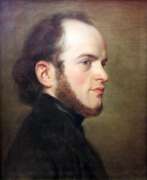

Adolph Friedrich Erdmann von Menzel was a German Realist artist noted for drawings, etchings, and paintings. Along with Caspar David Friedrich, he is considered one of the two most prominent German painters of the 19th century, and was the most successful artist of his era in Germany. First known as Adolph Menzel, he was knighted in 1898 and changed his name to Adolph von Menzel.
His popularity in his native country, owing especially to his history paintings, was such that few of his major paintings left Germany, as many were quickly acquired by museums in Berlin. Menzel's graphic work (and especially his drawings) were more widely disseminated; these, along with informal paintings not initially intended for display, have largely accounted for his posthumous reputation.
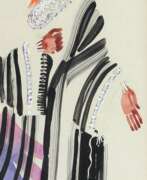

Pola Weizman was a Polish-born Israeli artist, known for her distinctive style of naive art and graphic design. Born in 1939 in Poland, Weizman survived the Holocaust and later emigrated to Israel, where she continued to develop her artistic skills. She studied at the Polytechnic College under notable instructors such as Narkis, Lipman, and Dan Karman, which significantly influenced her approach to art.
Weizman's art often depicted whimsical and vibrant scenes, reflecting the colorful street life of her adopted homeland, Israel. Her works were characterized by their simplicity and the joyful depiction of everyday life, which resonated with many art lovers and collectors. She had a notable one-woman exhibition at the Tel-Aviv Museum in 1970, which helped establish her reputation in the Israeli art scene.
Her artworks have been presented in various auctions, with her paintings often fetching prices that reflect her growing recognition in the art world. Her works are appreciated not only for their artistic value but also for their cultural and historical significance, capturing the spirit of a postwar Israeli society.
Weizman's legacy continues through the circulation of her artworks in galleries and auctions, offering collectors and art enthusiasts opportunities to own a piece of her unique artistic perspective. Her contributions to Israeli art are celebrated for their heartfelt portrayal of life and culture through the lens of a survivor and immigrant.
For those interested in exploring more about Pola Weizman's life and works, staying informed about upcoming auctions and exhibitions can provide valuable insights into her artistic journey and the impact of her works in the realms of naive art and Israeli cultural history.
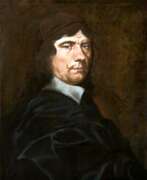

Michael Leopold Lukas Willmann was a German painter of the second half of the 17th and early 18th centuries. He is considered the outstanding painter of Silesia of the Baroque period, and has been called the "Silesian Rembrandt" or "Silesian Raphael".
Willmann became known for his technical mastery as well as the speed with which he executed commissions. During his lifetime he created about 500 paintings and frescoes, of which about 300 have survived to this day. He used a special technique of painting the background and correcting details, which was also used by his pupils. Biblical subjects were at the center of Willmann's work, and his frescoes adorn churches and monasteries in Silesia to this day.
